#saltimbanque
Text
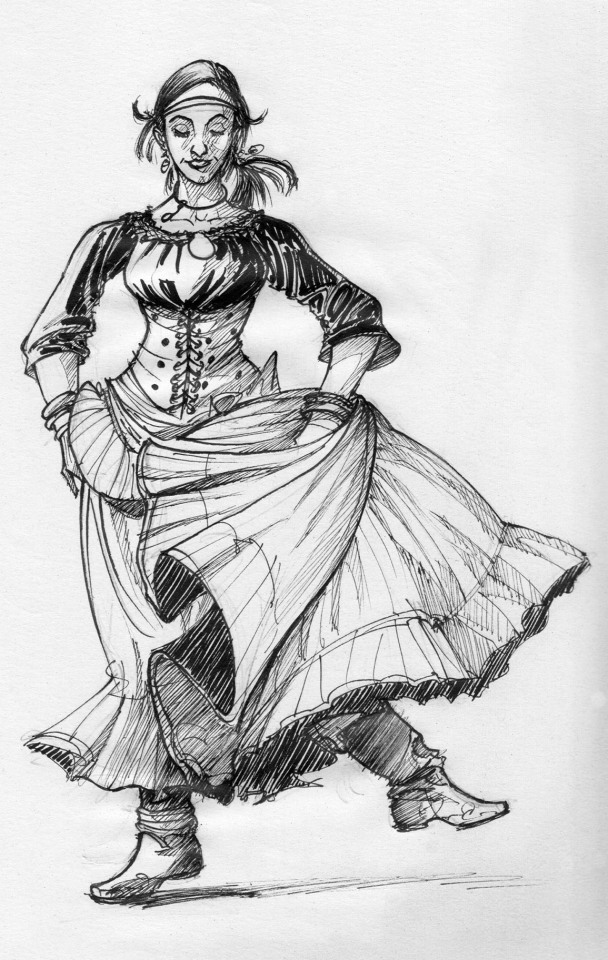
#croquis#dessin#noir et blanc#bande dessinée#sketch#drawing#black and white#comics#artists on tumblr#saltimbanque#entertainer#medieval#médieval#danseuse#dancer
10 notes
·
View notes
Text

Saltimbanque
A menace in the streets, roaming in the darkest alleys, showing off in the busiest plazas. They're entertainers for a price and eccentric beggars, performers in every sense of the word. Somehow they always manage to know the most obscure affairs happening at all times, in a way they might be the eyes, ears and hands of the town. Noises at night suggest they deal with far more than coins.
#a bad boy#i wouldn't trust him#my artwork#worldbuilding#saltimbanque#artists on tumblr#art#original art#illustration#digital art
12 notes
·
View notes
Text
Why can't we name the "smallfry" in splatoon ? I wanted to name him.
#here is my name idea:#salemamène#smallfriend#weird dog#sea doggy#saletamère#saltimbanque#smalty#smallfry#splatoon 3#what are yours?#what are your name idea ?
40 notes
·
View notes
Text
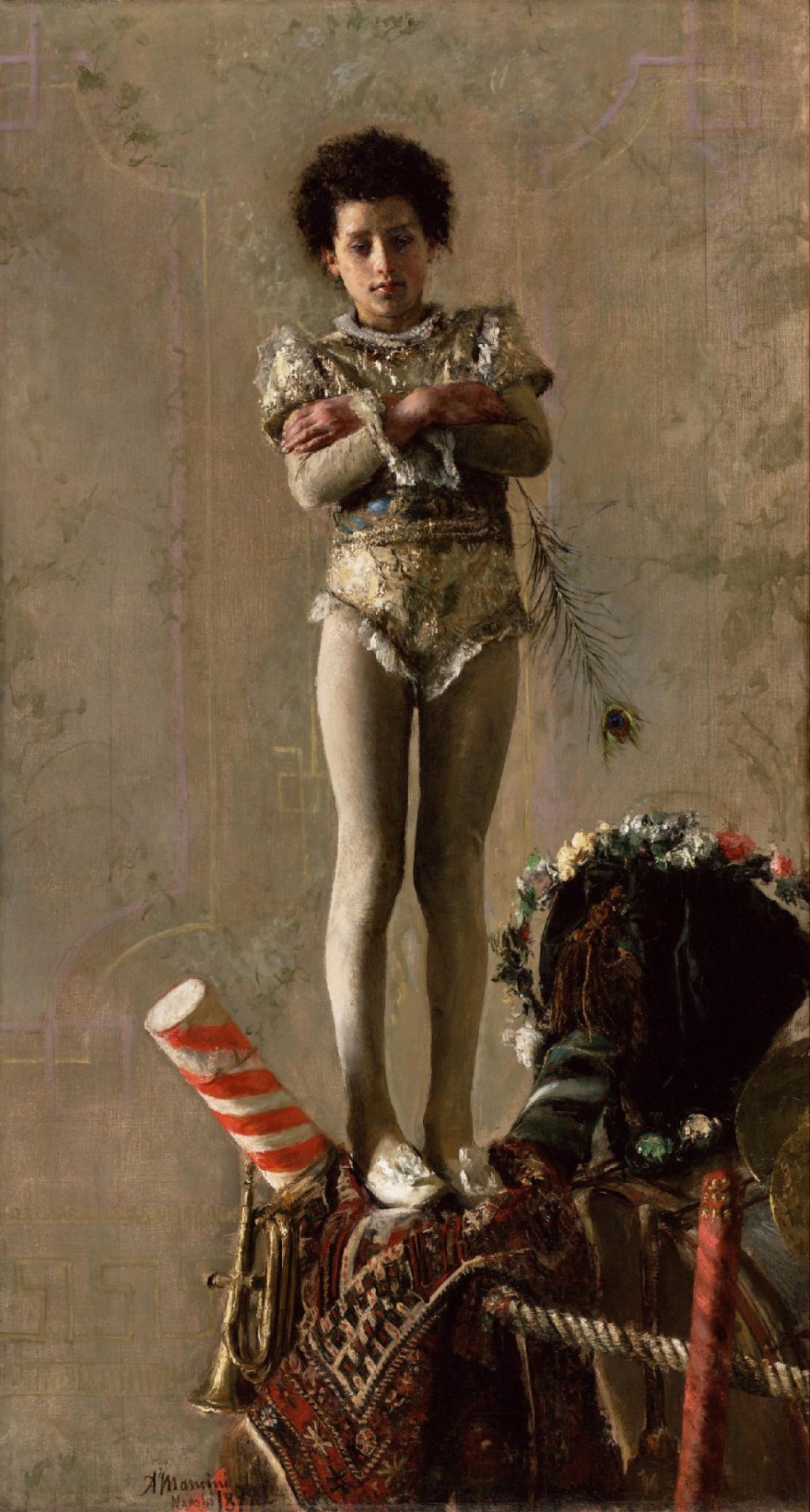
Il Saltimbanco by Antonio Mancini. Italy, 1879. Oil painting.
In the early 19th century, the exile of Napoleon lifted restrictions on public expression and brought about a new era of innovation in theater and performance, bringing about characters such as Pierrot and Harlequin. Antonio Mancini was part of the Verismo movement, an Italian response to Realism, and often painted children and street performers.
In this painting, he depicts a young boy (the model being Luigiello, one found in several of Mancini's paintings) as a Saltimbanco, an acrobat who used a small bench as his platform. This type of performer can be dated back to at least the 18th century, and would perform both on streets as well as in theaters. While the Saltimbanco is Italian in origin, the nature of this character changed with the changed in the French theater scene in the 19th century. The writings of the French poet Charles Baudelaire in particular reimagined the character in his short story, 'Le vieux saltimbanque.' Originally a cheery character associated with the thrill of Italian commedia, he was reimagined as a sad clown, a man depressed by the contrast of his "comic rags" to the misery around and in him. Similarly, Mancini often focused on the desolate, raggedy nature of the performers he was depicting, particularly when they were poor children. In this piece, the performer is not particularly raggedy, but he is rather frail and posed similarly to portrayals of Jesus as the "Man of Sorrows." This piece combines both the contemporary reinvention of theater as well as the artists focus on street performance, themes also seen in other portraits by the artist.
#art#art history#art history student#oil painting#painting#il Saltimbanco#antonio mancini#mancini#saltimbanque#saltimbanco#verismo#impressionism#street performer#acrobat#realism#victorian art
2 notes
·
View notes
Photo

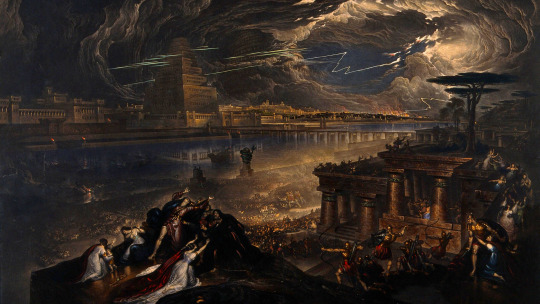
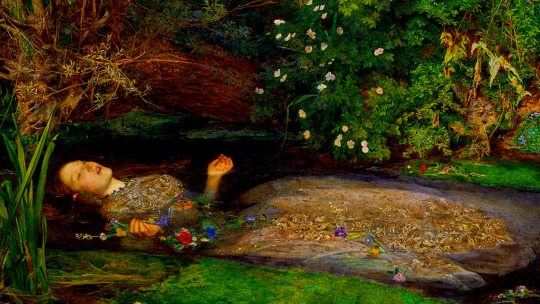
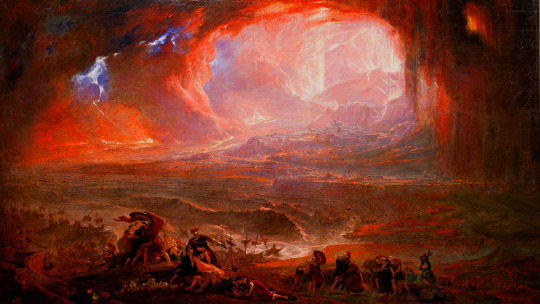
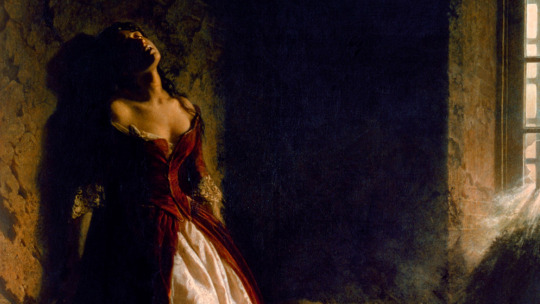
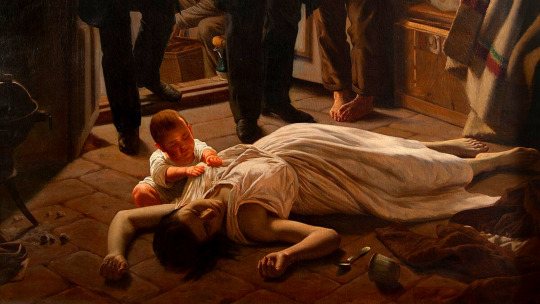
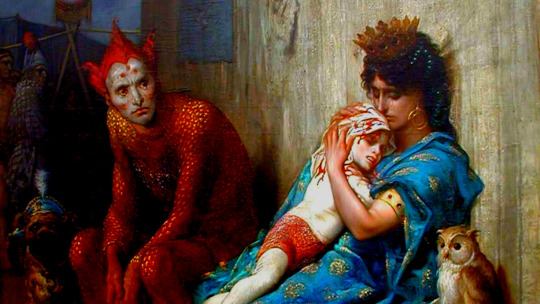
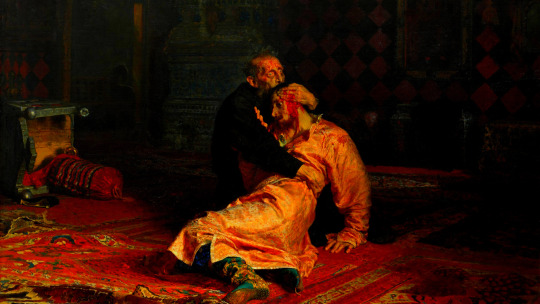
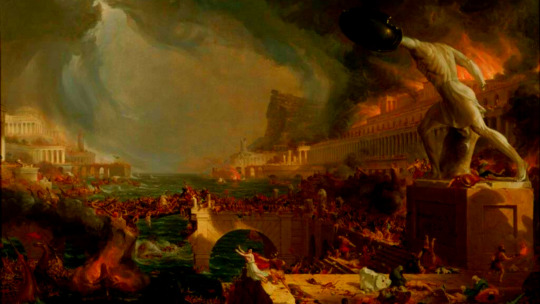

tragedy in art
the execution of lady jane grey by paul delaroche (1833)
the fall of babylon by john martin (1831)
ophelia by sir john everett millais (1852)
the destruction of pompeii and herculaneum by john martin (1822)
princess tarakanova by konstantin flavitsky (1864)
the episode of the yellow fever by juan manuel blanes (1871)
les saltimbanques by gustave dore (1874)
ivan the terrible and his son ivan by ilya repin (1885)
the course of empire, destruction by thomas cole (1836)
the plague of ashdod by nicolas poussin (1630)
#art history#history#the execution of lady jane grey#paul delaroche#the fall of babylon#john martin#ophelia#sir john everett millais#the destruction of pompeii and herculaneum#princess tarakanova#konstantin flavitsky#the episode of the yellow fever#juan manuel blanes#les saltimbanques#gustave dore#ivan the terrible and his son ivan#ilya repin#the course of the empire destruction#thomas cole#the plague og ashdod#nicolas poussin#art#vintage art#vintage
4K notes
·
View notes
Photo

Lucien Clergue. Trio de Saltimbanques. Arles. 1955
«Evocation Engine from the Latent Space» is my new blog on the AI-related project «Collective memories». Please, come visit now — and share later.
#BW#Black and White#Preto e Branco#Noir et Blanc#黒と白#Schwarzweiß#retro#vintage#Lucien Clergue#Saltimbanques#Alrles#France#1955#1950s#50s#kids#filhos#enfants#kinder#crianças#児童#子供たち#niños#dzieci#아이들#小朋友#Street photography#photographie de rue#Straßenfotografie#fotografia de rua
205 notes
·
View notes
Text


the family of street acrobats: the injured child (1873)
and
les saltimbanques (1874)
by gustave doré
#the family of street acrobats#les saltimbanques#gustave dore#pain#family#maternal love#painting#paintings#art#circus
29 notes
·
View notes
Photo

Lucien Clergue
87 notes
·
View notes
Photo

Family of Saltimbanques (French: Famille de saltimbanques) is a 1905 oil on canvas painting by Pablo Picasso. The work depicts six saltimbanques, a kind of itinerant circus performer, in a desolate landscape.
* * * *
"Behind the corpse in the reservoir, behind the ghost on the links, behind the lady who dances and the man who madly drinks, under the look of fatigue, the attack of migraine and the sigh. There is always another story, there is more than meets the eye."
-- W.H. Auden
32 notes
·
View notes
Text

#croquis#dessin#noir et blanc#bande dessinée#drawing#sketch#black and white#artists on tumblr#comics#saltimbanque#entertainer#cornemuse#bagpipes#médiéval#medieval#middle age#moyen âge#musicienne#musician
6 notes
·
View notes
Text
HK et les saltimbanques
.

.

.
.
.
Danser encore
HK et le saltimbanques
youtube
.
.
.
On lâche rien
HK et le saltimbanques
youtube
.
.
.
L'empire du papier
HK et le saltimbanques
youtube
.
.
La fin du Moi,le Dèbut du Nous
HK et le saltimbanques
youtube
.
.
Dis-leur que leur s'aime
dis-leur que l'on sême
HK et le saltimbanques
youtube
.
TRADUZIONE:
Dìgli, che noi amiamo
Dìgli che ci fa stare bene ...
Che non c'è nulla di male
Come puo’ essere un problema
se ci teniamo per mano?
Digli che stiamo seminando
Digli che ci fa stare bene
Come sarebbe un problema
Siamo il mondo di domani.
Digli che così nascono le colombe
Digli che qui comincia il nuovo mondo.
Digli che i nostri cuori si stanno aprendo
Quando il mondo è separato, isolato
digli che noi ci incontriamo.
Emancipati dalle camicie di forza
Racconta loro i nostri corpi che vibrano
Le nostre note musicali
Digli che siamo liberi in ogni passo di danza
sulla pubblica piazza.
Digli che siamo uniti
Digli che stiamo insieme
Digli che siamo vivi
su questa Terra che ci somiglia.
Digli che stiamo andando avanti
Com'è inevitabile attraverso le nostre differenze
Seguendo una stella inaccessibile
Digli che inventiamo
un altro canto delle possibilità
Come quegli uccelli canterini
al mattino presto di una grande serata
felice e ribelle .
Digli che è così
Come nascono le colombe
Digli che è qui che il nuovo mondo comincia
Digli che i nostri cuori si stanno aprendo
Quando il mondo è isolato, separato,
di loro, che noi ci incontriamo.
Emancipati dalle camicie di forza
racconta loro i nostri corpi che vibrano
Le nostre note musicali
Digli che siamo liberi
ad ogni passo di danza sulla pubblica piazza
.
12 notes
·
View notes
Text
Frédéric Manfrin - " Ballades parisiennes " saltimbanque
Musicien de rue, saltimbanque,Comme tu danses, tu pirouettes,Au milieu des passantsTu te moques des banques,Des gens sérieux, des faux prophètes,Car toi tu vis tambour battant.

View On WordPress
2 notes
·
View notes
Text
Weaving through the corridors of art history, the echo of Picasso's name resonates with an undeniable charisma. Pablo Picasso, the paragon of modern art, left a vivid imprint in the annals of creativity with his revolutionary oeuvre. A crown jewel in this diverse portfolio is his masterwork, the "Family of Saltimbanques".
"Family of Saltimbanques" represents a transformative period in Picasso's artistic career - the Rose Period. A time brimming with the warmth of color and more optimistic themes, it marked a shift from his earlier Blue Period's melancholic hues and subjects.
"Family of Saltimbanques" brings forth a troupe of itinerant circus performers - the Saltimbanques. The sheer poignancy of this composition resides in its delicate balancing act between the ostensibly cheerful lives of circus performers and an undercurrent of existential isolation. The exquisite dynamics of this artwork offers an open invitation for us to explore, to dissect, and to embrace its intricacies.
#art#culture#art history#artwork#painter#painting#artblog#wall art#home decor#picasso#pablo picasso#spain#spanish art#family#saltimbanques#symbolism
0 notes
Text
i’ve been obsessing over this tiktok video of Gustave Dore’s Les Saltimbanques that i even wrote a one shot based off of it
0 notes
Photo

Lucien Clergue. Les Saltimbanques, le Violoniste. Arles. 1955
#BW#Black and White#Preto e Branco#Noir et Blanc#黒と白#Schwarzweiß#retro#vintage#Lucien Clergue#Violoniste#Saltimbanques#violinist#Arles#1955#1950s#50s#kids#filhos#enfants#kinder#crianças#児童#子供たち#niños#dzieci#아이들#小朋友#portrait#Porträt#retrato
101 notes
·
View notes